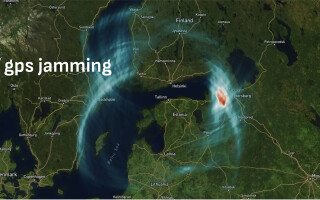Human space flight funding, remembering the Challenger crew
StoryApril 21, 2016

Televisions were rolled into classrooms at our high school when the news spread about the crash of the Challenger space shuttle. We watched the coverage all day: footage of the launch, the explosion, and President Reagan’s speech. All of it made life a little darker for us sheltered teenagers. The memory came back earlier this year while watching the coverage commemorating the 30th anniversary of the death of teacher Christa McAuliffe and six NASA astronauts when their spacecraft disintegrated moments after liftoff.
Thinking back to that day in 1986: The class went quiet as the disaster played out on the screen. By then we had grown used to shuttle missions going off without a hitch; we were too young to remember the tragedy that occurred in 1967 with Apollo 1, when a fire killed three astronauts.
I wondered if the space program would continue. It did continue, and many more missions followed, including another that ended in tragedy, the destruction of the space shuttle Discovery in 2006. Eventually the shuttle program was retired, but exploration continues, although at a pace much too slow for some of us.
Human space flight funding is getting cut again in the Obama administration’s fiscal year (FY) 2017 budget request, released earlier this year. Overall, the request is $19 billion, down about $300,000 from FY 2016 enacted, with funding for exploration at $3.337 billion, down nearly $700,000. Even though it is slated to increase each year until it reaches $4.262 billion in 2021, more money will likely be spent by billionaires Jeff Bezos and Richard Branson on their respective space flight companies – Blue Origin and Virgin Galactic.
Funding requested for the Orion program – the replacement for the now-retired space shuttle program – is at $1.120 billion, down from FY 2016 funding of $1.270 billion; the number is expected to remain flat through 2021. Dollars slated for operating the International Space Station (ISS) are also decreasing, at $1.431 billion in this year’s request, and decreasing slightly each year through 2021. NASA officials say that they will continue commercial development of U.S. crew-transportation systems to be certified to support the ISS by the end of 2017, eliminating the need to pay Russia for crew transport services. Regarding space transport, commercial crew funding is at $1.185 billion for FY 2017, with crew and cargo at $1.573 billion.
While manned space flight continues to take a hit in the budget, NASA is increasing funding for research and development (R&D) programs and efforts such as CubeSat, which sees its funding tripled to $10 million. The FY 2017 request aims to invest $579 million for R&D in space technology and $213 million for Small Business Innovative Research and Small Business Technology Transfer programs. About $30 million in funding is also slated for the Small Satellite Constellation, while funding for the Small Spacecraft Technologies program increases by about 50 percent. This request also increases Planetary Science research to about $1.519 billion.
All of these research projects, small satellites, and unmanned science missions are important and contribute to our understanding of space. They also help to enable future manned missions. Unmanned platforms are also crucial for the lethality and reconnaissance advantages they offer to the military (for more on this, see our Special Report and Mil Tech Trends sections on pages 20 and 28) and offer many new applications for both earthbound applications and safe space exploration for missions where humans just can’t go.
And yet … unmanned missions are just not as sexy or appealing to the public as a manned mission to Mars, the space shuttle missions, the Apollo Program, or what the original Mercury 7 astronauts accomplished. So maybe that’s the answer: The American public needs a reason to be interested and get behind NASA manned missions. Unfortunately, that pace will not likely pick up unless China gets there first. Americans like a competition, they like winning, and they will want to win with human heroes.
The good news is that NASA is hiring a new crop of astronauts and future heroes. But for now, let’s remember the seven who died 30 years ago and think about how they and their predecessors inspired us. Their names are Dick Scobee, Michael Smith, Ronald McNair, Judith Resnik, Ellison Onizuka, Gregory Jarvis, and Christa McAuliffe.
President Ronald Reagan said it best that day in his address to the nation – I still get choked up each time I watch it: “We will never forget them, nor the last time we saw them, this morning, as they prepared for their journey and waved goodbye and ‘slipped the surly bonds of earth’ to ‘touch the face of God.’”
To watch his address: [youtube=https://www.youtube.com/watch?v=Qa7icmqgsow;w=529&h=472]





